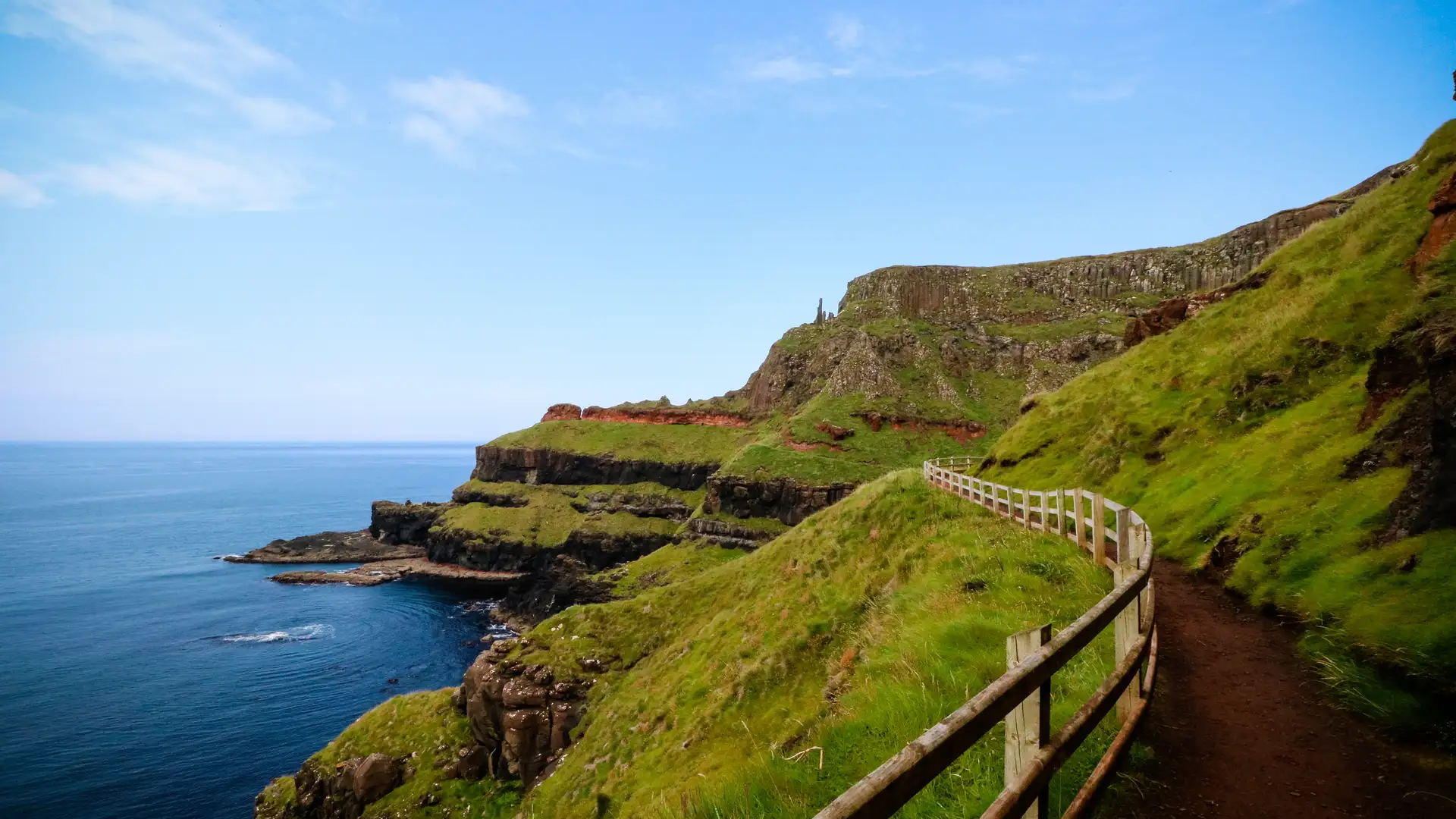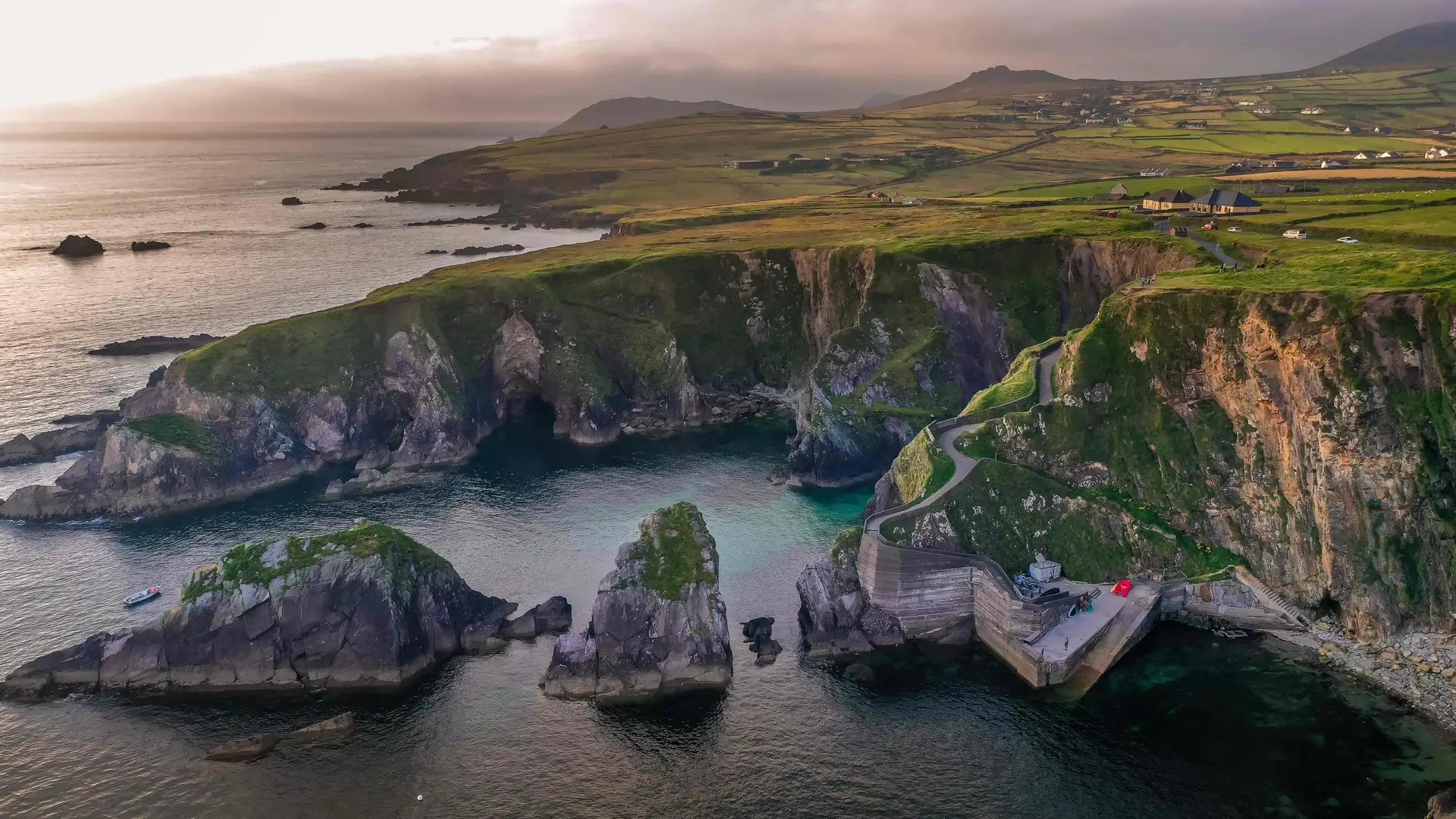

The Causeway Coast National Landscape (formerly Area of Outstanding Natural Beauty) stretches across Northern Ireland’s dramatic north coast — a region shaped by sea, stone, and story. From the basalt columns of the Giant’s Causeway to the fishing harbours of Ballintoy and the sweeping sands of Portstewart Strand, this is one of Europe’s most scenic seaboards — alive with movement, myth, and ever-changing light.
Recognised for its UNESCO and National Landscape status, the area brings together geological wonders, historic landmarks, and peaceful rural corners. Walkers can explore clifftop trails and quiet beaches, follow the Causeway Coast Way between seaside villages, or pause in harbour towns where local hospitality and sea air meet. Every mile reveals new perspectives — from wave-cut headlands to castle ruins perched high above the Atlantic.
Causeway Coast Way
A 33-mile (53 km) trail between Ballycastle and Portstewart, passing landmarks including Carrick-a-Rede Rope Bridge, White Park Bay, Dunluce Castle, and the Giant’s Causeway UNESCO World Heritage Site.
Dunseverick to Giant’s Causeway
A short but spectacular section of clifftop walking between two of the coast’s most photographed locations — ideal for a half-day hike.
White Park Bay & Ballintoy
Peaceful dunes, wide beaches, and fossil-rich cliffs. One of Northern Ireland’s most beautiful coastal stretches for relaxed walking.
Portrush to Portstewart Strand
Gentle seaside walking with golden sands and coastal views — perfect for evening strolls or family outings.
It’s a protected area on Northern Ireland’s north coast, designated for its outstanding natural beauty, geology, and heritage. Formerly an AONB, it’s now officially a National Landscape.
The National Landscape extends from the River Roe in County Londonderry to Ballycastle in County Antrim, covering the entire Causeway Coast Way and its surrounding countryside.
The Causeway Coast Way is the signature long-distance route, with shorter sections around Dunseverick, Ballintoy, and Portstewart Strand offering accessible day walks.
Yes — sections of the Causeway Coast Way and connecting trails form part of the Ulster Way, a countrywide network linking Northern Ireland’s best walking regions.
Late spring to early autumn offers mild weather, long daylight, and lively coastal villages. Autumn brings warm light and fewer crowds, while winter reveals the coast at its most wild and atmospheric — perfect for those who love dramatic walking conditions.

